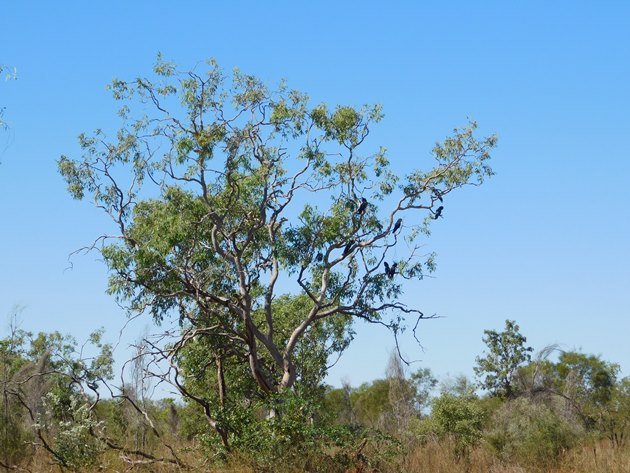
Red-tailed Black-Cockatoos have become a regular sight around Broome in recent weeks. They are usually heard before they are seen and call raucously as they slowly move across the sky. The wing beat of the Red-tailed Black-Cockatoo always appears very slow for such a large bird. The biggest flock we have seen in recent weeks has numbered over one hundred individuals, but generally the flocks have been smaller.
Red-tailed Black-Cockatoos are not observed around Broome during our wet season. They move away from the area once the rains arrive to dry areas, so they are obviously not too keen on the humidity and rain. They are a very long living bird and have been known to live over fifty years in captivity. In Broome we have six seasons and we are currently in Wirralburu, which is feeling pretty good after the humid weather! The downside is the humidity is so low at around 15% some days that you feel like you have been travelling by plane for days. Your skin is desperately dry and it is as close to flying that anybody is going to get! There has been a little easing on our travel restrictions, but nobody can enter the Kimberley area of Western Australia from anywhere. Of course the birds are free to travel and so they do! It is about to get colder at night too as we head towards the next season called Barrgana.
Red-tailed Black-Cockatoos are a lot bigger than the Gang-gang Cockatoos that we encountered in Victoria. They are still destructive as they feed in the native trees. They have very powerful beaks and claws and it is not uncommon to see where they have been by the leaf litter below the large trees. The small group of seven Red-tailed Black-Cockatoos that we observed most recently were busy feeding on a native tree. They are all present in the header photo and the photo below.
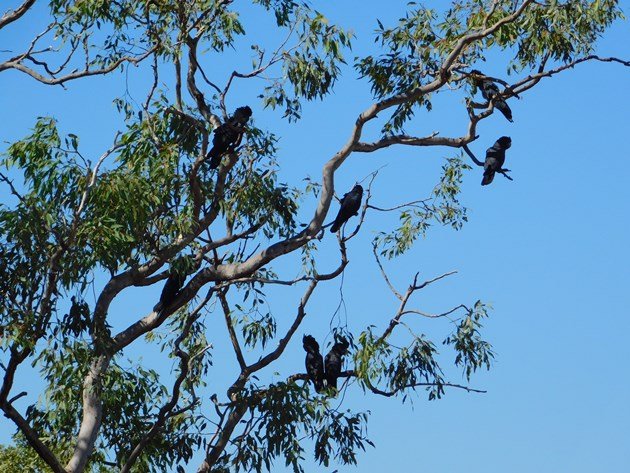
Seven Red-tailed Black-Cockatoos
The red tail is not visible in Red-tailed Black-Cockatoos when they are roosting, but very visible when they are in flight. If they become off balance in a tree then the red tail becomes apparent momentarily.
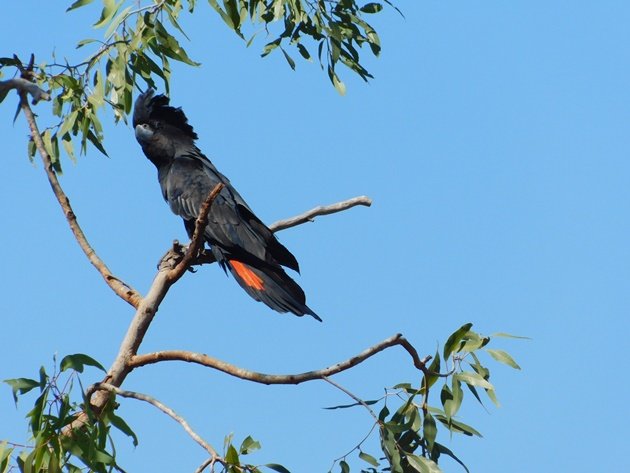
Red-tailed Black-Cockatoo displaying some of the red tail
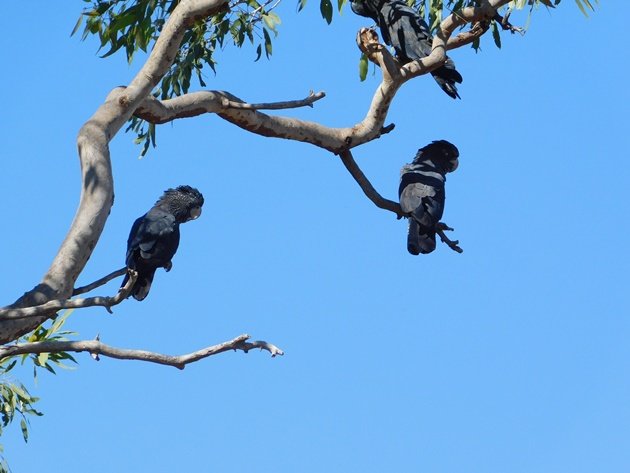
Red-tailed Black-Cockatoos not showing any red!
At this time of year we have plenty of blue sky and clouds become a distant memory. There are occasions when we do have rain during our dry season and this happened in June 2013. After such a poor wet season we would not mind a bit of rain over coming weeks.
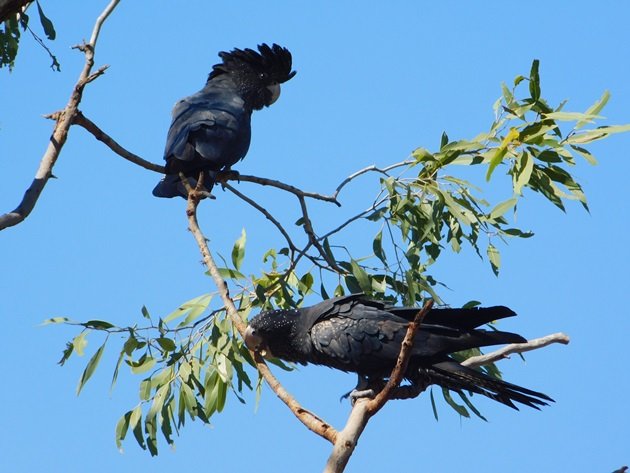
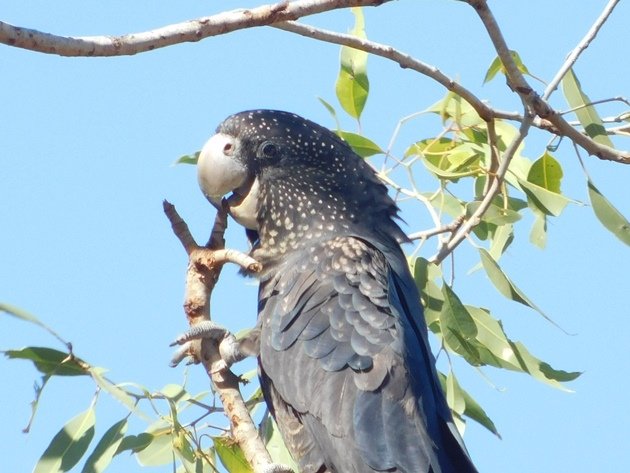
Red-tailed Black-Cockatoos feeding
The Red-tailed Black-Cockatoo is one of many birds that indicate a change in our seasons in Broome. We have also had a Paperbark Flycatcher return to our garden in recent weeks and even had four Galahs fly over this week. The shorebird migration is almost over for this year and we will await the return as the seasons change once again in a few months. It is also the time of year that Great Bowerbirds reconstruct their bowers and the processionary caterpillars are out and about again!
I hope you are all enjoying the small changes in your local environment as the seasons change.











They are spectacular birds! Amazing to see seven on one tree.
Eight just flew over home this morning!
Hi, I am wondering what the red tailed black cockatoos eat here in Broome. In the hills arount Perth the feed on marrie and jarrah nuts, but these are not available here in Broome
They eat seeds from our local eucalypts, but also fruit, berries, flowers and insects sometimes. They are in Minyirr Park and the bush around the end of the runway where there are larger trees this time of year.